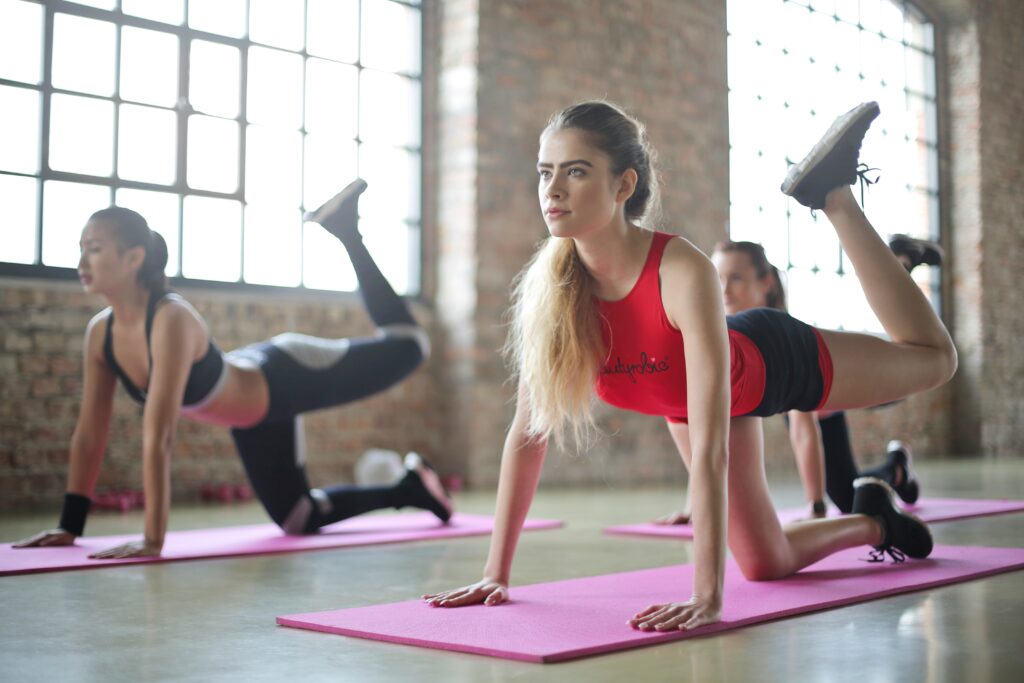
Introduction: The Importance of Physical Fitness
Physical fitness is essential for maintaining overall health and well-being. Regular physical activity helps improve cardiovascular health, build and maintain muscle strength, and enhance flexibility. Benefits of physical fitness include:
- Weight Management: Helps control weight by burning calories.
- Mental Health: Reduces symptoms of depression and anxiety.
- Sleep Quality: Promotes better sleep patterns.
- Chronic Disease Prevention: Lowers the risk of diseases such as diabetes, hypertension, and heart disease.
- Longevity: Contributes to increased life expectancy and better quality of life.
Prioritizing physical fitness is crucial for leading a healthier, more energetic life.
Setting Realistic Fitness Goals
Setting realistic fitness goals is crucial for long-term success. Goals should be Specific, Measurable, Achievable, Relevant, and Time-bound (SMART).
- Specific: Define precise objectives, such as running a 5K or losing 10 pounds.
- Measurable: Use quantifiable criteria to track progress, like weekly exercise duration.
- Achievable: Ensure goals are attainable given current fitness levels and resources.
- Relevant: Align fitness goals with overall lifestyle aspirations for better motivation.
- Time-bound: Establish a clear timeline to assess and achieve objectives.
Sticking to SMART criteria helps maintain focus and motivation, leading to sustainable fitness improvements.
The Best Exercises for Overall Fitness
Achieving overall fitness involves a balanced mix of cardiovascular, strength training, and flexibility exercises. Variability ensures that different muscle groups are worked, enhancing balance, coordination, and endurance.
- Cardiovascular Exercises:
- Running
- Cycling
- Swimming
- Strength Training:
- Weight lifting
- Bodyweight exercises (e.g., push-ups, squats)
- Resistance band workouts
- Flexibility Exercises:
- Yoga
- Pilates
- Static stretching
Regular engagement in these exercises can help in improving heart health, muscle strength, and flexibility, contributing holistically to one’s fitness journey.

Strength Training: Building Muscle and Boosting Metabolism
Strength training exercises involve the use of resistance to stimulate muscle growth. Implementing such exercises daily can enhance muscle mass and elevate metabolism, aiding in fat loss.
Key benefits include:
- Increased Muscle Mass: This promotes a toned appearance and enhances strength.
- Boosted Basal Metabolic Rate (BMR): More muscle leads to a higher daily calorie burn.
- Improved Bone Density: Resistance training strengthens bones, reducing osteoporosis risk.
- Enhanced Joint Functionality: Supporting muscles helps stabilize joints.
- Injury Prevention: Strong muscles and joints reduce the likelihood of injuries.
- Better Posture and Balance: Core and back strength improve alignment and coordination.
Consistency is key to achieving these benefits.
Cardio Workouts: Enhancing Heart Health and Endurance
Cardio workouts are essential for maintaining optimal heart health and boosting endurance. They involve exercises that increase heart rate and promote cardiovascular efficiency. The benefits include:
- Improved Heart Function: Regular cardio strengthens the heart muscle, enhancing its ability to pump blood.
- Increased Lung Capacity: Enhances respiratory function, making daily activities easier.
- Weight Management: Aids in burning calories, helping to maintain a healthy weight.
- Reduced Risk of Chronic Diseases: Lowers the risk of heart disease, diabetes, and hypertension.
- Enhanced Stamina: Supports prolonged physical activity without excessive fatigue.
Common examples include jogging, swimming, cycling, and brisk walking.
Flexibility and Balance: Stretching and Yoga
Incorporating stretching and yoga into a fitness routine enhances flexibility and balance. Improved flexibility reduces the risk of injuries and enhances daily movement. Yoga, through various postures, fosters mental tranquility alongside physical benefits.

Benefits of Stretching
- Increased Range of Motion: Regular stretching can lead to greater freedom of movement.
- Injury Prevention: Stretching before workouts helps in reducing the risk of strains.
- Post-Workout Recovery: Eases muscle soreness and aids in recovery.
Benefits of Yoga
- Stress Reduction: Incorporates breathing techniques that calm the mind.
- Strength Building: Poses target multiple muscle groups.
- Balance Improvement: Enhances overall stability and coordination.
Nutrition for Fitness: Fueling Your Body
Proper nutrition is vital for achieving fitness goals. Consuming balanced meals rich in macronutrients and micronutrients supports muscle growth and recovery. To optimize performance, consider the following guidelines:

- Protein: Essential for muscle repair and growth. Aim for lean sources like chicken, fish, beans, and tofu.
- Carbohydrates: Provide energy. Focus on complex carbs such as whole grains, vegetables, and fruits.
- Fats: Necessary for hormone production. Include healthy fats from nuts, seeds, and avocados.
- Hydration: Drink water regularly to maintain performance and recovery.
- Timing: Eat balanced meals every 3-4 hours to stabilize energy levels throughout the day.
The Role of Rest and Recovery in Fitness
Rest and recovery are integral to any fitness regimen. It aids in muscle repair, prevention of injuries, and overall performance enhancement. Key components include:
- Sleep:
- 7-9 hours per night
- Promotes muscle recovery
- Active Recovery:
- Light activities like walking or yoga
- Reduces muscle soreness
- Nutrition:
- Protein-rich diet
- Hydration with water and electrolytes
- Stretching:
- Improves flexibility
- Prevents stiffness
- Mental Rest:
- Mindfulness or meditation
- Reduces stress and boosts focus
Proper rest and recovery are essential in achieving long-term fitness goals.
Tracking Your Progress: Tools and Techniques
Tracking progress is essential for maintaining motivation and measuring success. Various methods and tools are available:
- Fitness Apps: Utilize apps like MyFitnessPal or Strava for logging workouts and tracking calories.
- Wearable Technology: Devices such as Fitbits and Apple Watches monitor daily activity, heart rate, and sleep patterns.
- Journals: A fitness journal helps document workouts, meals, and reflections.
- Photographs: Progress photos offer visual proof of changes over time.
- Body Measurements: Regularly measure weight, waist, hips, and other key areas.
- Performance Metrics: Keep records of personal bests in exercises like running, lifting, and swimming.
Overcoming Common Fitness Challenges
Overcoming fitness challenges is a crucial part of any fitness journey. Here are strategies to address some common hurdles:
Lack of Time
- Prioritize Workouts: Schedule exercise sessions like appointments.
- High-Intensity Interval Training (HIIT): Provides effective workouts in less time.
Motivation Struggles
- Set Realistic Goals: Small, achievable milestones keep motivation high.
- Find a Workout Buddy: Encourages accountability and makes exercise more enjoyable.
Plateaus
- Vary Workouts: Incorporate new exercises to keep things interesting.
- Track Progress: Keep a fitness journal to identify areas needing improvement.
Physical Limitations
- Consult Professionals: Seek advice from fitness trainers or physical therapists.
- Modify Exercises: Adapt workouts to fit personal capabilities.
Staying Motivated: Tips for Long-term Success
Staying motivated is crucial for long-term fitness success. Here are some strategies:
- Set Clear Goals
- Define specific, measurable, achievable, relevant, and time-bound (SMART) goals.
- Track Progress
- Use a fitness app or journal to record workouts and progress.
- Find a Workout Buddy
- Partner with someone to stay accountable and make workouts more enjoyable.
- Mix Up Routines
- Avoid boredom by varying workouts to challenge different muscle groups.
- Reward Yourself
- Plan rewards for reaching milestones to stay motivated.
- Maintain a Positive Mindset
- Focus on progress, not perfection, and celebrate small victories.
Combining Physical and Mental Well-Being
Incorporating mental fitness alongside physical exercise can significantly enhance well-being. Practicing mindfulness and physical activities in tandem fosters a holistic approach to health.
- Mindful Movements: Integrate yoga, Tai Chi, or Qigong into workouts to promote both focus and flexibility.
- Mental Breaks: Scheduled mental breaks like deep-breathing exercises can reduce stress and improve performance.
- Positive Self-Talk: Encouraging affirmations can motivate and sustain exercise routines.
- Balanced Workouts: Combining aerobic exercise with strength training ensures a comprehensive fitness regime.
- Goal Setting: Establishing realistic physical and mental health goals fosters sustained progress.
Conclusion: Embrace a Healthier Lifestyle
Adopting a healthier lifestyle involves consistent effort and dedication. It’s not merely about physical changes but also about mental well-being. Incorporate balanced nutrition, regular exercise, and mindfulness practices into daily routines. Set realistic goals and celebrate progress, no matter how small.
- Balanced Nutrition: Choose whole foods over processed options.
- Regular Exercise: Aim for at least 150 minutes of moderate activity weekly.
- Mindfulness Practices: Incorporate activities like yoga or meditation.